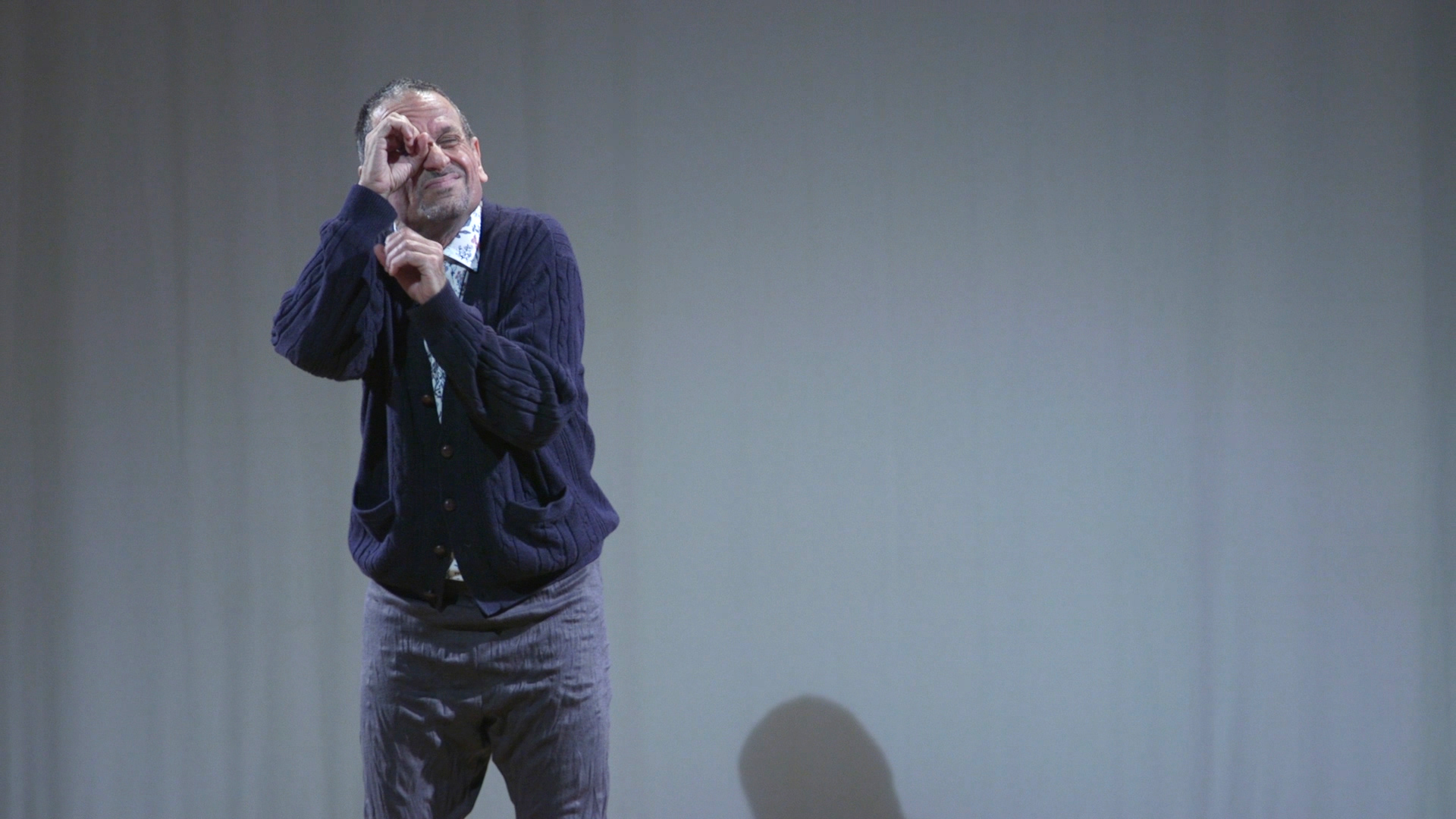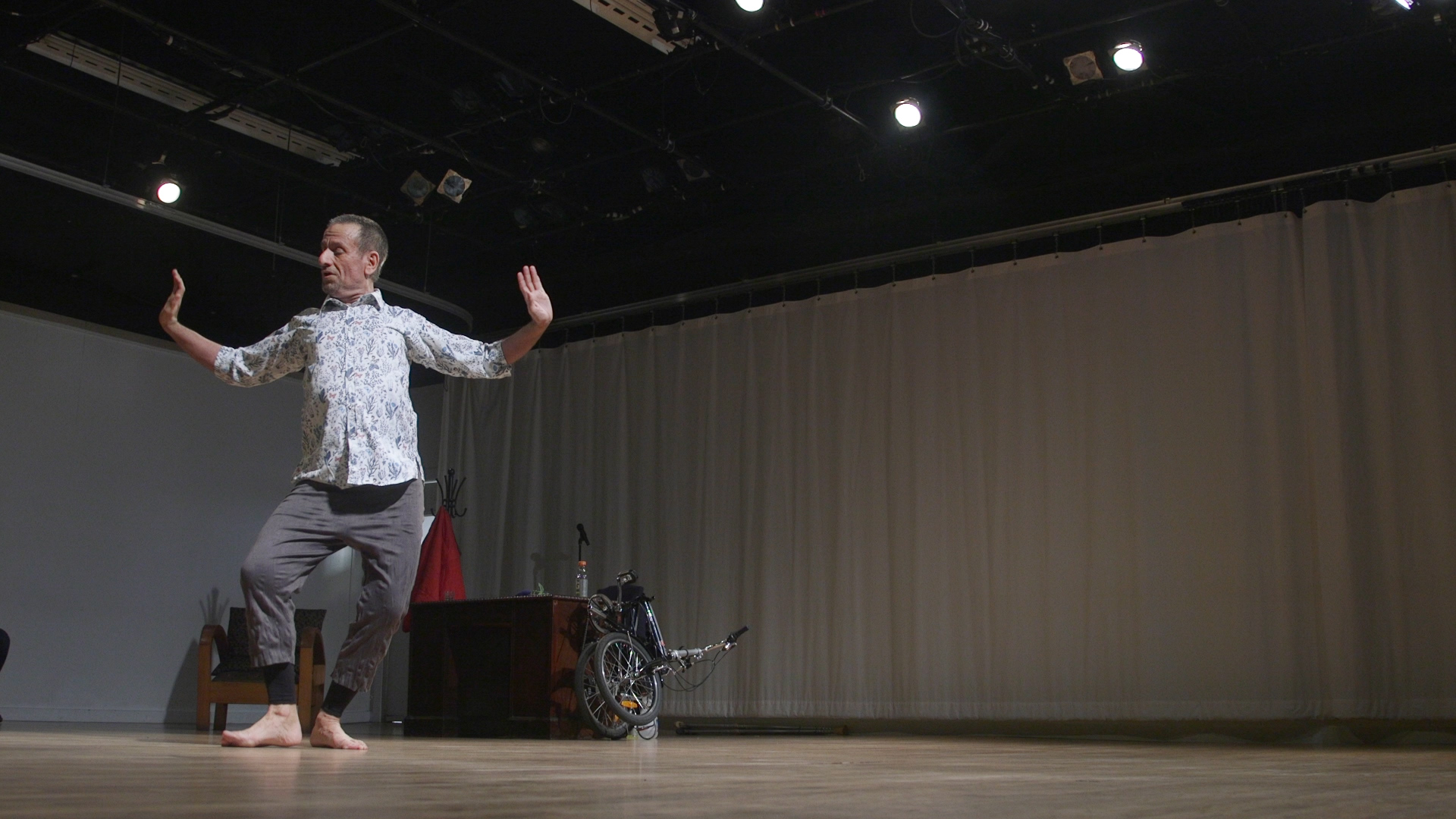During an early rehearsal for choreographer Mark Haim’s new solo performance, Parts to a Sum, he recounted a dream he had the night before: “I was walking up a steep hill and it just kept getting steeper, until it became totally vertical. And I had to keep walking up it.” Paging Dr. Jung.
His latest project (at Velocity Dance Center, April 12-13) is a massive physical and mental endeavor — a labor of love with a heavy dose of both. To create it, he solicited more than 400 friends and family members and requested a five to 10 second video from each, capturing “movement with good intentions.” He ended up getting 370 responses, from dancers and nondancers around the world, ranging in age from 93 to a year and a half.
Next: He organized the videos in birth order, memorized every chassé, every smirk, and stitched them together into a full dance performance, replicating each video clip in sequence, from oldest contributor to youngest.
“It’s basically a solo that consists of 370 other solos,” Haim says. Some of those solos feature complicated dance phrases, but others are simple: biting into a bunch of basil, walking on the beach, a child’s frantic footwork, an old woman’s clasped hands. The result is charming and revealing, touching and funny — a panoply of human movement, embodied in one 58-year-old example.
Haim has been dancing for 40 years. Originally from Long Island, New York, he arrived in Seattle in 2002, when he was invited to be an artist in residence at the University of Washington’s dance department. “It was going to be for a year but then I extended it three years, and then five years, and then Seattle became my new home,” Haim says. He has choreographed more than 100 dance pieces for companies all over the world, including Nederlands Dans Theater, Ballett Frankfurt and The Joffrey Ballet.
With an expressive face that perpetually lands in a smile, Haim radiates kindness, humor and desire for genuine connection. He started developing the concept for Parts to a Sum in 2016, when tensions over the presidential election were running feverishly high and “people were unfriending each other on Facebook.” He was constantly talking with other artists, asking, “How do we make work that matters?” An idea arose: sharing his work with other people — to the radical extent that it wasn’t even his own choreography.
“I didn’t want to send a mass email,” Haim says, of embarking on the project. “I wanted to take the time — an hour, an hour and a half — talking to people on the phone.” Part of the point was to reconnect with people dear to him, people who had some part in creating the person he is today. It was like counting his blessings in real time.
“It was about these time-consuming and pleasurable actions,” Haim says, which in their own way, felt like a form of “resistance.” After the first 20 or so calls, he felt a bit like a used car salesman. “I’d developed a pitch … and the pitch was like, ‘I’m making a solo to save the world.’”

In the performance, Haim reproduces not just the choreography of his contributors — a silly shuffle, a serpentine sweep of a wrist — but the set of their eyes, their posture, their essential physicality. He shape-shifts over and over again, channeling the people he knows so well, letting them hang out in his body for five to 10 seconds. Some of the movements challenge him physically (a “crow pose” from yoga), and some of them crack him up (an exaggerated “ta da”). Every shift makes evident he’s really thinking about each person, bringing them to us through him.
Haim cites another motivation for the piece: his own aging. “Somewhere in [my] 40s and then going into the 50s … there really was this strong feeling for me.… I knew that I was closer to the end than the beginning,” Haim says. He notes the very real phenomenon of “seems like just yesterday,” and the physical slowing down that happens just as time seems to accelerate. He wanted to capture that with the chronological progression of movement, augmented with snippets of popular music that suddenly swell up and disappear like memories.

When Haim was working on replicating the submission from Martha Myers, a legendary dance teacher who is 93 years old, he realized something. “The way she clasped her hands … usually you just alternate fingers,” Haim says. “I had to keep looking at it with my glasses because, ‘Wow, her pinky is just like grabbing two and the thumb is over here.’” He remembered that one of the youngest contributors, Harvey, had a similarly surprising way of making mundane gestures. “They were less organized,” he says.
This brought a revelation. “The life cycle is this progression into organization and out of organization,” Haim says. “We come from gunk and and we go to gunk. The gunk is timeless, both super young and super old.” He felt more than a little mind-blown by this new perspective. “It has changed my outlook on life in such a profound way.”
Watching the performance last weekend, the audience was rapt by Haim’s gentle embodiment of the oldest folks (“the ancients” as he calls them fondly), and laughed at the spot-on imitations of the youngest kids’ goofball dances. After Haim left the stage, the original videos were projected on the back wall, running from youngest to oldest. Viewers stayed in their seats, captivated by the footage, wanting to witness each moment in time, wanting to see how it ends.
Get the latest in local arts and culture
This weekly newsletter brings arts news and cultural events straight to your inbox.



